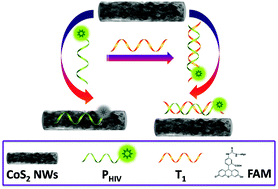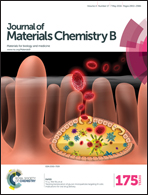Cobalt disulfide nanowires as an effective fluorescent sensing platform for DNA detection†
Abstract
In this communication, for the first time, the facile production of cobalt disulfide nanowires (CoS2 NWs) is achieved in solution using a two-step hydrothermal method and the formation mechanism of CoS2 NWs is based on the anion-exchange reaction involving the pseudo Kirkendall effect. As a proof-of-concept application, CoS2 NWs are applied as an effective fluorescent sensing platform for the detection of nucleic acid and this nanosensor exhibits extraordinarily high sensitivity with a detection limit as low as 10 pM and good selectivity. Most importantly, the successful use of this sensing platform in the fetal bovine serum system is also demonstrated.


 Please wait while we load your content...
Please wait while we load your content...